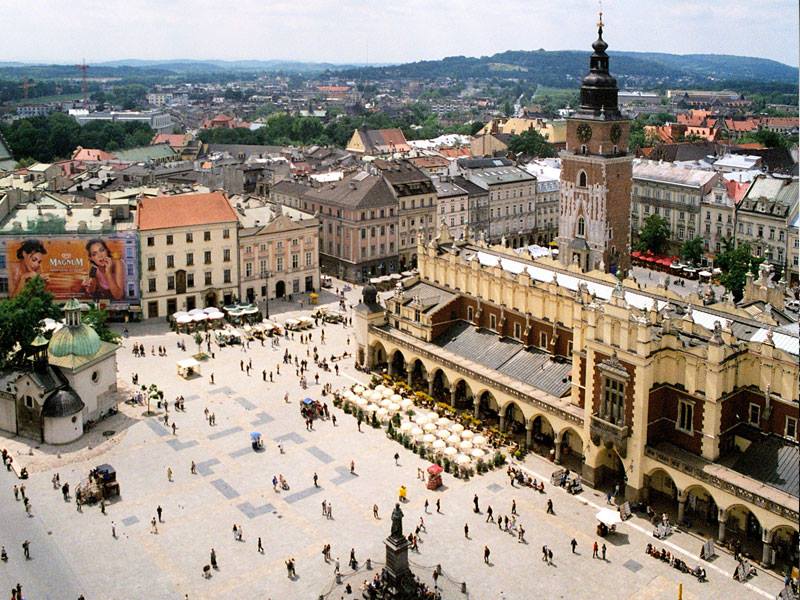
Why Culture Matters
Culture matters. For any citizen in the West this is a self-evident assertion that requires no proof. The most important cultural and diplomatic organisations in the world are united around the idea of the significance of culture. The value and significance of culture should be talked about every day. And it should be done through various channels and methods. Yet, in the former Soviet states, the cultural sphere is for some reason associated with either propaganda or subsidised sectors.
Nevertheless, we have apt examples of how cultural initiatives bring people together and make them better. One of the best examples is Gogolfest. In 2015, more than 80,000 people attended it over the course of 11 days. Every year the festival attracts hundreds of organisations including embassies, cultural centres, galleries, theatres, musical collectives and many others to create 15 extensive programmes. Vlad Troitsky’s personal initiative eventually grew into a huge forum for tens of thousands of people. In the near future, Gogolfest will go beyond Kyiv. “Already this year, the festival will be held in Ivano-Frankivsk. If such an event had been held throughout Ukraine in the last 20 years at least, we wouldn’t have had a war,” the voice Maksim Demsky, the director of Gogolfest, says, literally exuding confidence. “Cultural events such as the festival aim to humanise society, for people there can be interaction on a different level: not day-to-day, but at the creative level. At some point, society intuitively sensed the importance of mainstreaming the cultural process, and many small initiatives, non-governmental organisations, a volunteer movement appeared. But we need all of that on a larger scale. After all, culture is, in essence, that part of the public consciousness without which statehood cannot exist as such.”
Talking about statehood. No matter how much we try to change the sceptical view of culture with small deeds at local level, this will not be easy to achieve without a state cultural policy.
.png)
UK
In 2007, the forward-looking UK took the decision to become a creative country and launched the Creative Britain programme. It aims is to improve the quality of life of every Briton through cultural and sporting events, develop the creative industries, tourism and the entertainment industry. On the one hand, this is rather an abstract statement. But a few years on, we see that it is largely at the source of both the social and economic success of the country. And particularly its economic success, whereas culture in our country is often regarded as something divorced from reality, say, like a painting hanging on the wall in a museum: yeah it's there, great.
According to the British government website, at the end of January 2016 (https://www.gov.uk/government/news/creative-industries-worth-almost-10-million-an-hour-to-economy) the creative industries in the UK were generating roughly GBP 9.6 million per hour. The Minister for Culture Ed Vaizey believes that they bring a record GBP 84 billion a year into the country's economy and are growing twice as fast as any other economic sector. However, this did not happen by itself. It is the UK government that creates the right environment for the creative industries: offering tax incentives, domestic investment and innovative education. One can complain about abstract figures concealing data of a general nature and exaggerations. But the fact remains that in Ukraine no statistics of any kind are compiled and no analysis of the economy of the cultural field is conducted.
In 1977, in a provincial part of Yorkshire in the UK, an open air exhibition of 31 sculptures was unveiled which cost the organisers GBP 1,000. Since then, this gallery without walls has become a large-scale sculpture park where the works of the most significant contemporary artists, from Henry Moore to Anthony Gormley, are exhibited. “More than 500,000 people visit our park and it brings upwards of GBP 5 million a year to the region's economy,” says Helen Febby, its chief curator. “This data underscores the importance of the park as a major international art centre and unique tourist destination for Yorkshire and the whole of England, which did not exist before the creation of the park.” Moreover, today the park is a key economic driver for the local and regional economy thanks to which hotels, cafes, transport and other related spheres are developing.
.png)
USA
If we talk about examples from the other side of the Atlantic, we cannot but mention the Metropolitan Museum, which according to experts brought in some one billion dollars in 2015 for the economy of New York. Naturally, this revenue does not just include sold admission tickets but also the entire tourism sector that develops around the field of culture. This includes air tickets, hotels, restaurants and everything else. One could argue that people do not come for art. But statistics show that for 54% of them one of the main motivating factors was precisely visiting the Metropolitan Museum. This says a lot about the power of the museum and the city’s brand, and everything can be attributed to successful marketing. But this does not change the fact in any way that the tourism sector is not only linked to, but also directly dependent on, the cultural and arts sectors. And not vice versa. They both make a significant contribution to the city and the country's economy.
Spain
One more piece of proof of this is the Guggenheim Museum in Bilbao that 1,011,363 people visited in 2014. The museum opened in 1997. The Basque authorities financed the construction of the museum on fairly special conditions: the Guggenheim Foundation had warned that officials would not be able to interfere in anything, including architecture and exhibition planning. The authorities agreed to all the conditions. The project cost the municipality some USD 89 million. The whole idea seemed very risky, but the museum immediately became popular and in its first three years 4 million people visited it, spending a total of EUR 500 million in Bilbao. The authorities, meanwhile, collected 100 million in taxes which covered the cost of construction.
Russia
A typical objection: well, it works for them, the civilised West, it wouldn’t work here. Then here's an example in context close to us, The Garage Centre of Contemporary Art that opened in 2008. “In 2010, 131,000 people visited the museum, and in 2015 already, over 500,000,” says Anton Belov, the director of today's The Garage Museum that the centre has turned into. In 2015, 1,472 educational events were held at the museum. At the same time, The Garage is a good example of the new economic model of non-profit institutions. For example, the bookstore alone brought in around UAH 845,000 last year. The souvenir shop, which opened only recently, has brought in good profit too. It is still not possible for The Garage to pay off all the costs of expensive exhibitions such as the star Louise Bourgeois. Nevertheless, overall, it is a good example of how to reasonably manage funds and use them for the development of a project.
.png)
Ukraine
It is one of Ukraine’s worst traditions to follow up successful examples with criticism of our country. But I will talk of my own personal experience, which gives faith in Ukraine as a country with great cultural potential. Back in 2012, we organised a festival of contemporary sculpture at the Gryshko National Botanical Garden. It was a lengthy, expensive and complicated project. However, in the end, 600,000 visitors saw the exhibition in the space of a month and Jaume Plensa’s House of Knowledge sculpture, which had become the symbol of the festival, was so popular that visitors tearfully asked whether it could be kept forever. Half a million people compared with the Metropolitan Museum’s figures is peanuts of course. If it were not for one fact. The average attendance at the botanical garden, documented by years of statistics for June, is 200,000 people. That attendance grew threefold as a result of the festival. And here the issue is not just society’s interest in art but also about the economy. Admission to the festival was free. But admission to the botanical garden is UAH 20 for adults. This is the profit that the management of the institution was finally able to use for the repair and reconstruction of necessary things. The same funds that the government is always short of. This short festival demonstrates, first and foremost, the potential of citizens, their interest in culture and art and their willingness to take part in it economically.
Of course, we are in a difficult situation and these reflections are not of a critical nature: so, what’s keeping you from just going ahead and doing it. What gets in our way are legal restrictions that do not give either private or state institutions the opportunity to develop, out-dated thinking and laziness. But most importantly, what really gets in our way is the absence of understanding culture as a value. The understanding that it is precisely culture in its broadest sense and initiatives that are born in its field – museums, festivals, educational programmes, etc., – that are necessary for a better and more meaningful existence of each and every single one of us. And for the development of society in a positive key in general.




